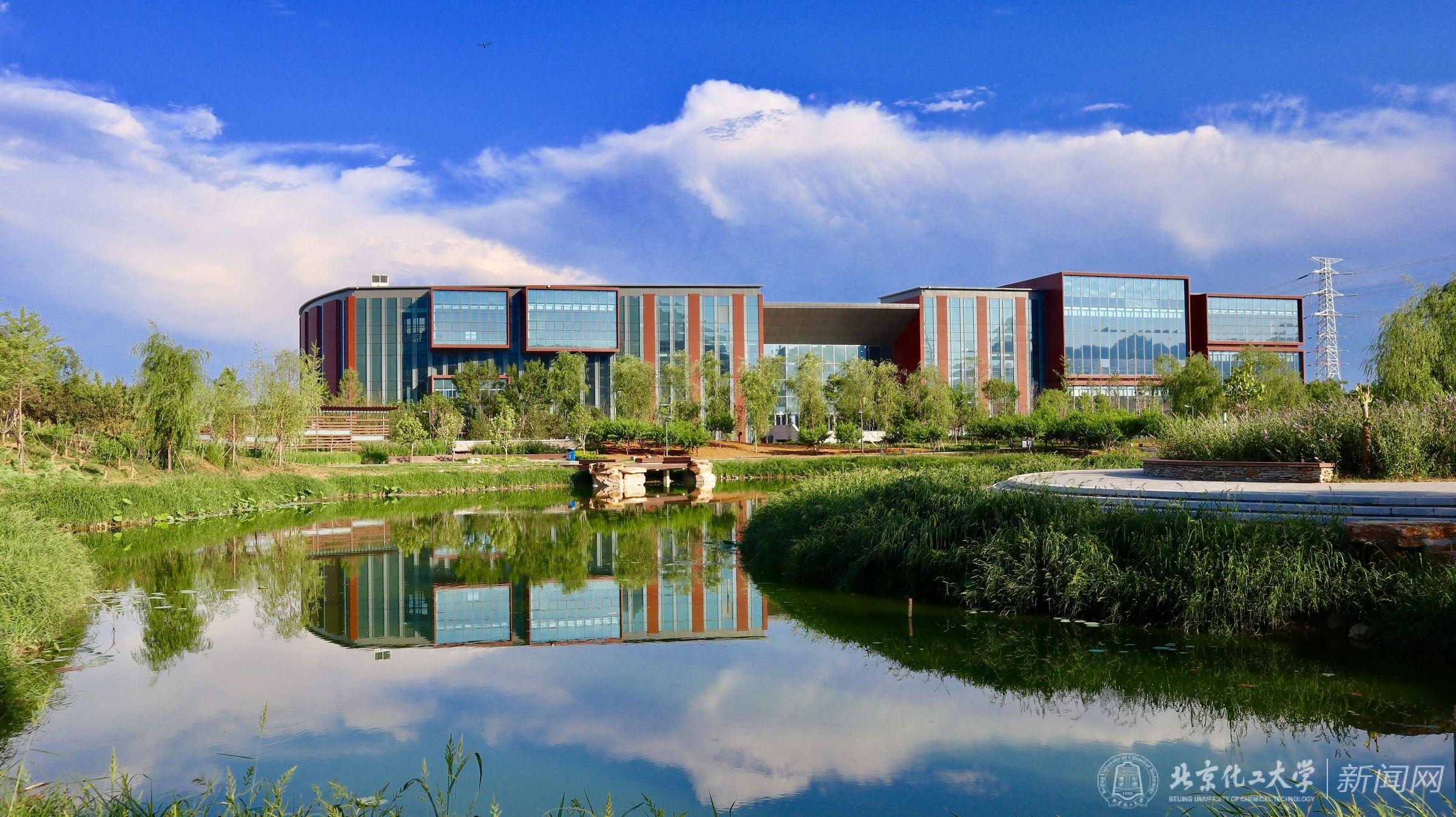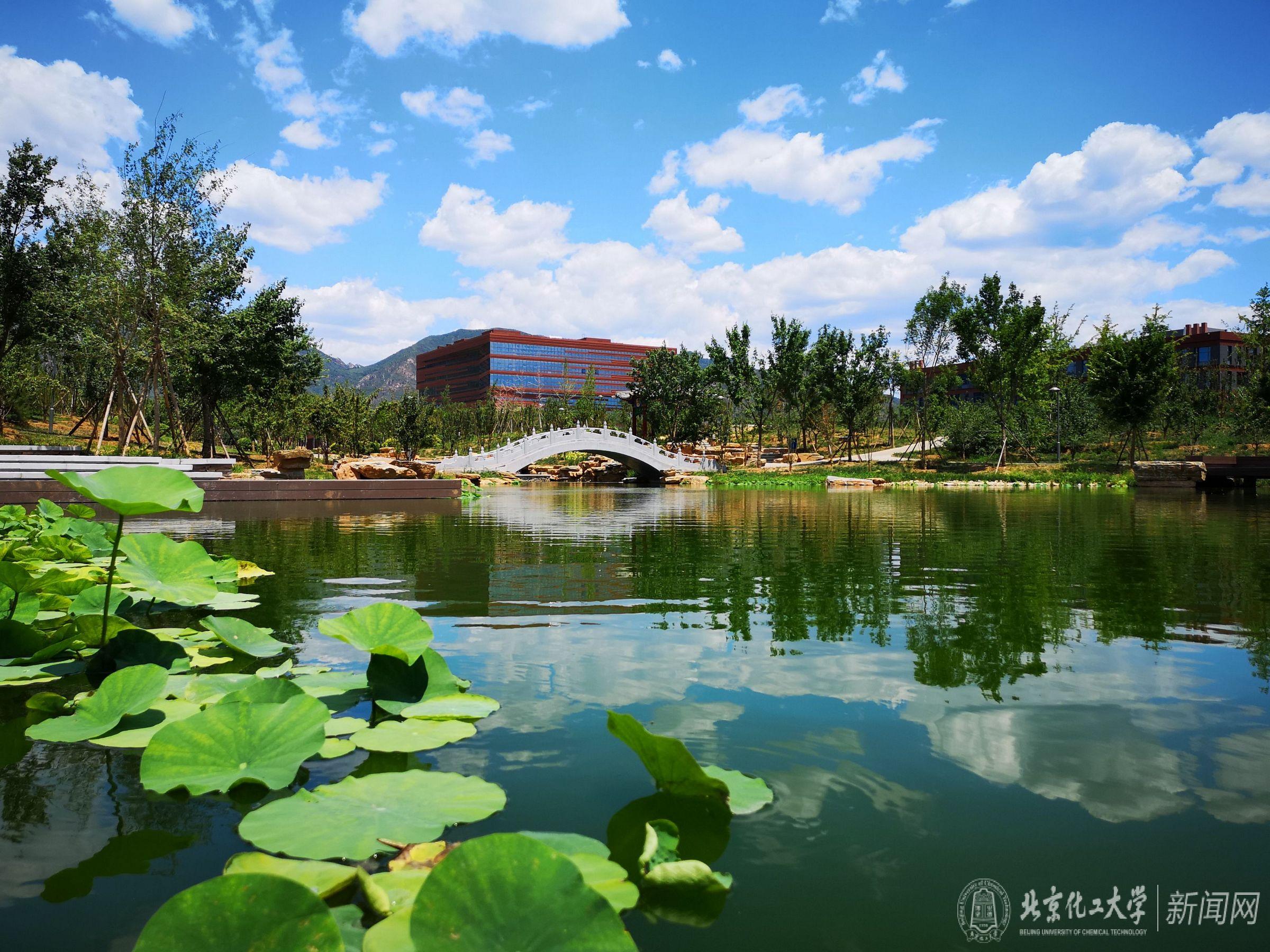Beijing University Of Chemical Technology
Beijing University Of Chemical Technology
Founded in 1958, Beijing University of Chemical Technology, formerly known as Beijing Institute of Chemical Technology, is a high-level university founded by New China for "training advanced chemical talents required by advanced science and technology". As a national key university directly under the Ministry of Education, the national key construction institutions of "211 Project" and "985 Advantage Discipline Innovation Platform" and the national "first-class disciplines" construction universities, Beijing University of Chemical Technology undertakes the task of training high-level innovative talents, basic, forward-looking scientific research and original high-tech development. Life.
After 60 years of construction, Beijing University of Chemical Technology has developed into a multi-disciplinary key university with solid foundation of science, strong engineering strength, and distinctive disciplines of management, economics, law, literature, education, philosophy and medicine. It has formed a flow from undergraduate education to master's, doctoral and postdoctoral students. Multi-level personnel training pattern, such as station and foreign student education. At present, the school has 15 colleges, with 15331 full-time undergraduate students, 7055 graduate students (including 953 doctoral students), 3350 correspondence, Evening University and other continuing education students, and 358 foreign students with academic qualifications.
The strength of school disciplines has steadily increased. Chemistry ranked first in ESI, while materials science, engineering, biology and biochemistry ranked first in ESI. Chemical engineering and technology rank third in the fourth round of discipline evaluation in China. In 2017, the subject group of "Green Chemistry, Chemistry and Materials" in our university was officially listed in the first-class discipline construction. There are 8 doctoral programs in the first-level disciplines, 21 master's programs in the first-level disciplines, 2 master's programs in the second-level disciplines, 6 master's degree authorization categories and 8 engineering master's authorization fields; 1 national key disciplines in the first-level disciplines (covering 5 secondary key disciplines), 2 national key disciplines in the second-level disciplines, and 1 national key disciplines (cultivation). ) Disciplines, three first-level disciplines, Beijing key disciplines (covering 14 second-level key disciplines), two cross-key disciplines in Beijing and three second-level disciplines, 50 undergraduate disciplines, eight national characteristic specialty construction points, 14 Beijing characteristic specialty construction points, 13 pilot national comprehensive reform specialties, 6 There are five certification majors of Engineering Education in the Ministry of Education, two national key laboratories, one national engineering research center, one national engineering laboratory, 14 provincial and ministerial key laboratories, 15 provincial and ministerial Engineering Research centers, and two social sciences. Provincial and ministerial bases; 7 post-doctoral mobile stations.
The strength of the school's teaching staff is strong. The school currently has more than 2,500 faculty members, including 8 academicians from both academies, 5 foreign academicians, 13 specially appointed professors of the Yangtze River Scholars Award Program of the Ministry of Education, 23 National Outstanding Youth Fund recipients, 3 famous teachers of the "ten thousand plan" teaching, 8 chief scientists of "973" and 128 government special allowances (including 29 on-the-job). The National "Ten Thousand People Program" has seven leading talents in scientific and technological innovation, four top young talents in the National "Ten Thousand People Program", 13 winners of the National Excellent Youth Science Fund, five famous teaching teachers in national universities, eight "National Excellent Teachers" of the Ministry of Education, one outstanding professional and technical personnel in the country and one Chinese Young Women Scientist Award. There are 2 winners, 9 National millions of talents, 8 winners of China Youth Science and Technology Award, 4 winners of 100 leading talents in Beijing, and 69 outstanding talents in the new century from the Ministry of Education.
Achievements of school teaching reform are constantly emerging. At present, there are two national teaching bases, one national college students'cultural quality education base, two national experimental teaching demonstration centers, three national virtual simulation teaching experimental centers, 12 national college students' off-campus practical teaching bases, one national talent training model innovation experimental area and one national high school of the Ministry of Education. School practice education, innovation and entrepreneurship bases, 7 Beijing-level experimental teaching demonstration centers, 5 Beijing-level off-campus talent training bases, 2 Beijing-level on-campus innovation and practice bases, 1 Beijing-level cultural quality education base, and 1 Beijing Philosophy and Social Sciences Research Base. Fifteen national quality courses, 15 national quality resource sharing courses, 2 national quality video open courses, 5 provincial and ministerial bilingual Demonstration Courses and 37 Beijing quality courses. The Ministry of Education has one excellent textbook for general higher education, 10 excellent textbooks for Beijing higher education, 14 planned textbooks for the Twelfth Five-Year Plan, one first-class prize for national teaching achievement, nine second-class prizes for national teaching achievement, 37 first-class prizes for Beijing teaching achievement and 47 second-class prizes for Beijing teaching achievement. There are 5 teams and 10 excellent teaching teams in Beijing.
Scientific research in schools has developed rapidly. The ability to undertake major projects and meet the major needs of the country's economic and social development has been further strengthened. Science and technology expenditure has continuously reached a record high, and per capita research expenditure ranks among the top universities in the country. Since 2001, 27 scientific research projects have won three national science and technology awards, three innovation research groups of the National Natural Science Foundation Committee, six innovation teams of Jiang scholars, one second batch of national defense science and technology innovation team of the National Defense Science and Technology Bureau, and five national intelligence base, ranking in the forefront of national universities. It is one of the only three "211 Project" and "985 Advantage Discipline Innovation Platform" industry colleges and universities jointly built by the National Defense Science and Technology Bureau and the Ministry of Education during the 13th Five-Year Plan period. A large number of scientific research achievements have been published in the top international academic journals such as Nature and Science, and various scientific research achievements have been applied to the state's cutting-edge scientific and technological fields. In 2018, 624 million yuan of science and technology funds were received, 419 patents were granted and 9 appraisal results were obtained.
The transformation of scientific and technological achievements in schools has been continuously strengthened. The school adheres to the construction of a service-oriented and innovative country, leads the transformation and upgrading of enterprises, promotes economic and social development, and promotes the reform of "three powers". Beijing Soft Material Science and Engineering Innovation Center has been built. Beijing University of Chemical Technology Science Park has been recognized as "National University Science Park", "Beijing Small and Medium-sized Enterprises Venture Base" and the fourth batch of "National Technology Transfer Demonstration Institutions". The school's science and technology industry has about 30 scientific and technological industry entities closely integrated with teaching and scientific research, relying on the advantages of science and technology and talents of the school, and taking the industrialization of scientific and technological achievements as its business purpose, has formed a high-tech industry with northernization characteristics, and has formed a department in the fields of biochemical industry, daily chemical industry, fine chemical industry and new chemical materials. List technology and a variety of products. In recent years, combined with the demand of advantageous disciplines, local economic development strategy and the improvement of enterprise's scientific and technological innovation ability, the school has also focused on the Pearl River Delta, Yangtze River Delta and Bohai Rim. Five school-site cooperative local research institutes, such as Advanced Materials and Industrial Biotechnology, have been established successively. They are located in Weihai, Anqing, Cangzhou, Jiaxing and Jiyuan. Six technology transfer centers and more than 200 joint research and development institutes have been established.
International exchanges and cooperation among schools are becoming more and more extensive. Our school has implemented the "globalization" strategy and continuously expanded its global strategic partnership with 131 universities and institutions in the United States, Britain, France, Germany, Australia, South Korea and Japan. There are one Beijing High-end Innovation Center, three Beijing International Cooperation Joint Laboratories (Research Center), three Beijing International Science and Technology Cooperation Bases and two school-level International Joint Research Centers. We are committed to promoting the construction of "one belt and one road". We have organized the global forum of heads of technology transfer in Beijing University of Chemical Technology. We have established a partnership with 37 universities and institutions along the "one belt along the road". We have established the Beijing University of Chemical Technology "one belt and one road" college, and China Petroleum and chemical industry international capacity cooperation enterprise alliance. "One belt and one road" international talent training center. We should adhere to the combination of high-end leadership and key advancement, actively promote international cooperation in education, science and technology, make overall plans for intellectual projects outside the school, and focus on supporting the first-class discipline construction of "green chemistry, chemical industry and materials" in our school. We insist on holding large-scale international conferences and academic forums, undertaking exchange projects with Taiwan, inviting renowned professors such as Nobel Prize winners to enter our "Hong De Forum" to have in-depth exchanges with undergraduates in the new campus. We will continue to promote the internationalization of our teachers. In 2018, there were 138 temporary delegations, totaling 218 people, involving 41 countries, 6 delegations to Hong Kong, Macao and Taiwan, totaling 12 people, 621 short-term overseas experts and 24 long-term foreign experts serving in schools, including 13 foreign teachers and 11 foreign postdoctoral students. Chinese experts and scholars have worked in China for a short period of time amounting to 26 people. We will actively promote international exchanges among students. The school has signed 64 cooperation agreements with 42 universities and institutions in 20 countries on students'overseas learning projects. In 2018, 418 students were sent to the overseas learning projects. The first International Education Exhibition on Overseas Learning of Beijing University of Chemical Technology was held. 21 delegates from 15 famous universities abroad participated in the exhibition. More than 400 students participated in the exhibition. At the same time, this year, our University launched the "Beihua-Top 100 Universities Master-Master Elite Program", selecting 6 undergraduates and 7 postgraduates to study in the top 100 Universities or top universities in the world for summer, short-term research and doctoral degree. To further promote cultural exchanges between China and foreign countries, this year, our university has completed cultural exchanges projects with universities such as the United States and Hungary, namely "Project-GO of Sino-American Humanities Exchange Camp", "Beihua-Wuster University of Technology Sino-American Science Camp", "Beihua-Confucius Institute Summer Camp of Hungary Mishkortz University", and so on. More than 40 foreign students have come to China. To carry out cultural and scientific and technological exchanges.
Schools attach great importance to the employment of students. Take the whole school's efforts to promote employment, establish a perfect employment guidance and service system, attach importance to the whole process of employment guidance for students, and actively play the leading role of the school in the process of supply and demand meeting and two-way selection between graduates and employers. The school has 25 selected "10,000 excellent innovative entrepreneurship tutors" from the Ministry of Education. Ku's teachers carefully guide students to start their own businesses. Over the years, the one-time employment rate of graduates has been ranked among the top universities in China. In 2018, the employment rate of graduates was 98.71%, and that of graduates was 97.73%.
Today, under the guidance of Xi Jinping's socialist ideology with Chinese characteristics in the new era, Beijing University of Chemical Technology adheres to the motto of "hongde, erudite learning and nurturing talents" and the spirit of "solidarity, dedication, hard struggle, practical implementation and erudite innovation" to build a "double first-class" university. As an opportunity, we should speed up the construction of high-level research universities with distinctive characteristics and international influence, and contribute to the northernization of the Chinese dream of the great rejuvenation of the Chinese nation in order to achieve the goal of "two hundred years". (Data statistics up to 31 December 2018)



-
2.Three Lanes and Seven Alleys
Three Lanes and Seven Alleys(Sanfang Qixiang) is a national 5A tourist attraction, which is the only remaining part of the old city of Fuzhou
Time 2018-12-08 -
3.Taierzhuang Ancient Town
Taierzhuang Ancient City, located at the center of the Beijing-Hangzhou Grand Canal, is located at the junction of Taierzhuang District, Zaozhuang City, Shandong Province
Time 2018-12-08 -
4.Mount Mangdang Han culture tourism scenic spot
Located in Yongcheng City, Henan Province, Mangdao Mountain Han Culture Tourist Area is a national AAAAA-level scenic spot which integrates landscape sightseeing, cultural appreciation and ecological
Time 2018-12-09 -
5.The Peninsula Shanghai
Shanghai Peninsula Hotel is located on the Bund, which has a long history. It is the only new building on the Bund in 60 years. It can enjoy the Grand View of the Bund, Huangpu River, Pudong
Time 2018-12-16 -
6.Shanghai Changfeng Ocean World
Shanghai Changfeng Ocean World belongs to the world's largest aquarium chain brand of Merlin Entertainment Group, which is the first and second largest in Europe
Time 2019-03-17 -
7.Taoist Music
Taoist music is one of Chinese religious music. Taoist music is an indispensable part of Taoist rituals. It has the characteristics of foiling and rendering religious atmosphere, enhancing believers'y
Time 2019-04-25 -
8.Kazakhstan 62 Kwohner
Kazakhstan 62 Kwohner 62 Kwohner is Kazakh folk classical music, which means "62 suites". It is a comprehensive art mainly composed of instrumental music, accompanied by folk songs, dances,
Time 2019-05-02 -
9.Fouriers Magic
Fu Tenglong, a national first-class actor and famous magic performer, is a member of the art team in the 1950s. Fu Tenglong was born in a magic family. He is an international magician who integrates p
Time 2019-05-04 -
10.Traditional Brewing Techniques of Brewing Wine
Chrysanthemum wine is a necessary drink for Chongyang Festival. It has a long history of brewing. Royal chrysanthemum liquor of Ming and Qing Dynasties was a kind of precious liquor created on the bas
Time 2019-06-09 -
11.Small febrile coma
Xiao Redun is a kind of traditional Wu rhetoric banter popular in Jiangsu, Zhejiang and Shanghai. It is also known as "Xiaogongshu", commonly known as "selling pear ointment candy"
Time 2019-07-06 -
12.Anhui University
( Anhui University For short, "anda" is located in the provincial capital. Market It's the state. "Double First-Class" initiative "World class discipline construction," M
Time 2019-10-04